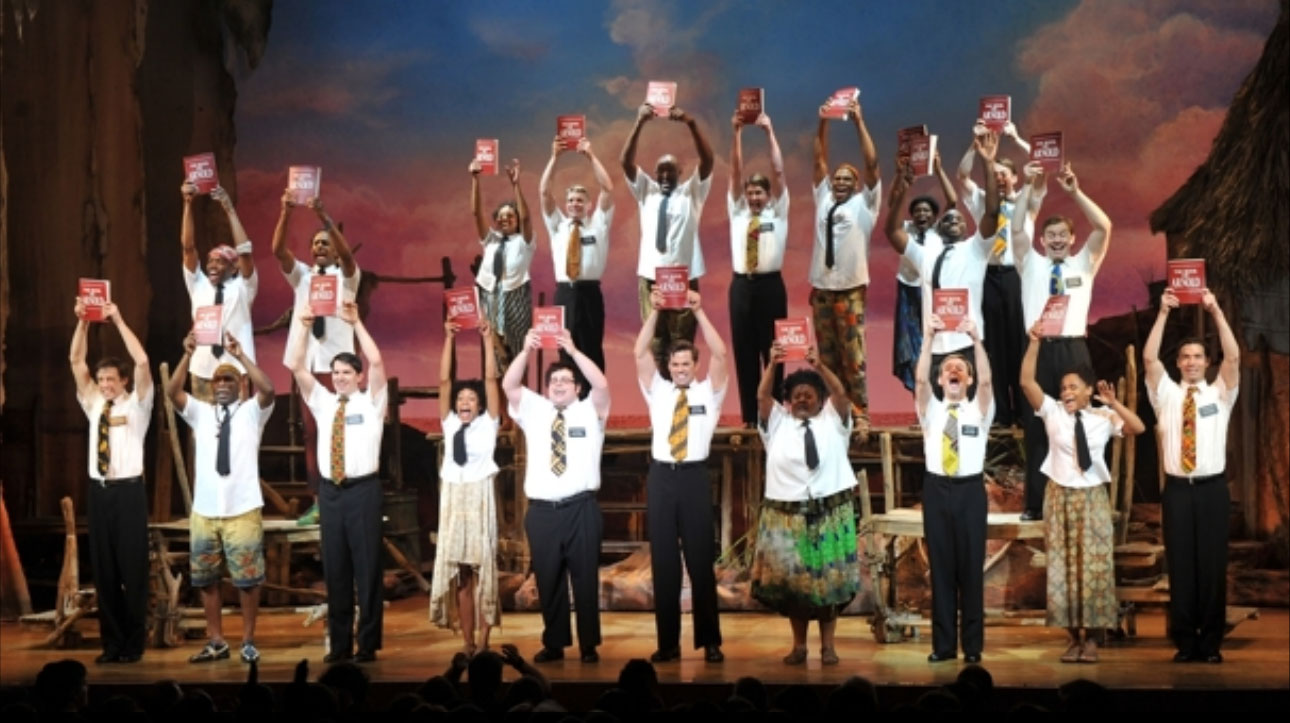
I spent last weekend in New York City with a few of my friends, reveling in the much-needed break from the routine of classes and work and extracurriculars. In the last night of our trip, my friend and I found ourselves rushing through the baffling, disorienting, punchy landscape of Times Square, laughing and delirious, to secure a seat for The Book of Mormon eight minutes before the show started, got standing tickets, and waited eagerly to be beset with raucous laughter.
I was laughing throughout the show. And so did the majority white audience, as well. The show is a raging satire about the incoherence of Mormon beliefs and practices, with songs ranging from critiques about their missionary quest and suppressed desires (“Turn it off/ Like a light switch/ Just go flick/ It’s our nifty little Mormon trick”) to Spooky Mormon Hell Dream and All-American Prophet. This musical is a hilarious and unflinching caricature of Mormons in America, digging deep into some of the inconsistent and disturbing consequences of the religion’s practices. The story follows two young missionaries, Elder Price and Elder Cunningham. To their dismay, they get placed in Uganda (hilariously contrasting Price’s ardent dream for Orlando, Florida). When they get there, they find a highly caricatured and stereotyped African city with people who say “fuck you” to god, where the only town doctor also has– as we’re always reminded to cue laughter– “maggots in his scrotum”, and where General Butt-Fucking-Naked wants to mutilate the genitals of the women in the town. Elder Price is appalled, tries to civilize the town, but leaves and loses faith in God, while Elder Cunningham (the dumb one) teaches them Mormonism all wrong, mingling it with Star Wars and fantasy worlds. The Ugandans believe they are true Mormons and to share their excitement, they put on a huge play to demonstrate their understanding of Mormon history, but because they were taught it incorrectly, we have a painful ten-minute song with All-American Joseph Smith jerking off to frogs, unsettling sexual innuendos, and something that resembles a minstrel show– but not to be feared! By the end of the musical, Elder Price and Elder Cunningham start their own form of Mormonism, and all the black people are Mormons in the end, again reinforcing the incoherence of the faith.
But this musical also reinforces something else, and that is anti-black racism. It was hard for me to tell in the moment if the jokes were appropriate to laugh at– they were smart, raunchy, and it seemed to be in the position that we were laughing at everyone. Nothing was safe in the musical. The white people, the black people, the Mormons, the atheists. It was highly irreverent, and drove home its purpose: to show how silly not only Mormon practices were, but how generally blind religious practices that were pursued for ego and fame, and that strove to “civilize” others always backfired in the end.
But The Book of Mormon only complexifies the white narrative, not the black one. By the end of the musical, we get a progressive critique about Mormonism– but they had to use African people in order to achieve that. They had to caricature Africa, reduce it down to the most obvious stereotypes: uneducated, gullible, oversexualized, impoverished. Against this setting, our understanding of Mormonism complexified and were challenged, even through the satire: we see that Elder Price is narcissistic, that Elder Cunningham is ignorant, that there are problems with repression and self-righteousness. But this wasn’t the case for the Africans in the musical. Their narrative remained caricatured and degraded, all the way until the end. There is no growth to our understanding of their existence in the play– they are there simply as a plot device to support the complexity of the white characters’.

A popular clapback is that it’s not only the black people that are caricatured, but also the whites! However, this doesn’t hold water– the musical literally reinforces the white savior complex because by the end, the Ugandans convert to the disformed form of Mormonism anyway. The white characters achieve some level of success in their attempt to “civilize” the Africans; and even though the musical makes fun of this success, it still seems to me like The Book of Mormon desperately wants to maintain the power balance from the white savior complex.
I don’t regret watching the show, but after thinking about it for a week, I realized how uncomfortable I had been in the theatre as one of the only people of color there. This is a musical that white people can heartily laugh to– it’s the only time they get a pass for laughing at jokes about Africa because they are thinly veiled in the form of satire. But if you look any closer, the musical only reinforces the stereotypes it purports to repudiate.
(Image from Google Images.)




